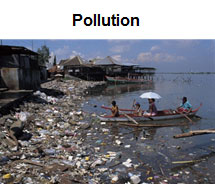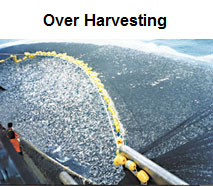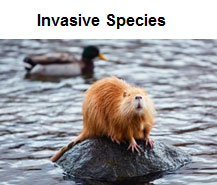
Sustainability is the ability of a system to be maintained over a long period of time. Ecosystem sustainability means maintaining ecological interactions and processes, such as food chains and webs, biogeochemical cycles, and populations.
The more sustainable an ecosystem is, the healthier the ecosystem is said to be. If an ecosystem can deal with external factors or threats with little interruptions in the interactions and processes of that ecosystem, it is considered sustainable.
The biodiversity of an ecosystem contributes to the sustainability of that ecosystem. If there is high biodiversity in an ecosystem, the ecosystem is highly sustainable. In turn, if the biodiversity of an ecosystem is low, the sustainability of that ecosystem is also low.
Remember, for species to survive they must have the following:

Any threats to these factors will alter the sustainability of an ecosystem. Click on each picture below to learn more about the threats to an ecosystem’s sustainability.

Source: Clear-cutting, Wikimedia Commons
Practices that destroy the habitats found in an ecosystem, such as clear-cutting trees or deforestation, alter the sustainability of that ecosystem. Removing the trees removes some organisms’ shelter and food. Removing the trees also alters the carb cycle. The trees are not able to take in carbon dioxide and give off oxygen. Also, when trees are removed, the soil can erode and be washed away.

Source: Pollution, Worldwildlife.org
Pollution of water, air, and land reduces the food and water supply in an ecosystem. Pollution also reduces available shelter. When important factors such as food, water, and shelter are reduced, this will reduce the number of organisms that the ecosystem can support. This will in turn reduce the number of mates.

Source: Over Harvesting, Wikimedia Commons
Over harvesting of plants and animals can alter the biodiversity and sustainability of an ecosystem. Over harvesting can eliminate food sources for other animals in the ecosystem.

Source: Nutria, Newyorker.com
An invasive species is any species of plant, animal, or disease causing harm to organisms that are not native to an ecosystem’s environment. The invasive species alters the balance of the ecosystem by introducing new competitors for food, water, shelter, and space.

Actions such as the ones above can cause a domino effect on an ecosystem. Altering even the smallest factor in an ecosystem can cause reactions that can destroy an entire ecosystem.